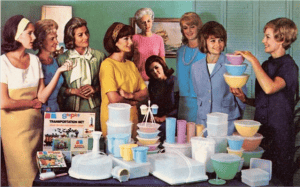The trend of plastic-phobia is reaching global craze. By now, it’s not just the nutritionists who are familiar with Bisphenol A, or BPA. Unless you’re a whistle-blower in hiding or social media hater, you’ve likely seen one or two packages labeled with the dubious sticker “BPA Free”. We ask that our medically-savvy audience be patient with us as we define this trend and insert some statistical information into the battle for/against plastics.
What is BPA?
BPA is a chemical product that helps harden polycarbonate plastics, lacquer in cans and water supply pipes, dental sealants, and epoxy. It can be found in most of the items we use today:
- Water bottles
- Infant bottles
- CDs
- Safety equipment
- Medical devices
- Food cans
- Bottle tops
- Receipts
- Water supply pipes
It’s clear that most of the things we are exposed to on a daily (hourly…minutely?) basis have BPA. As of the 1970s, we’ve been heavily using plastics out of sheer convenience.
Why are we so worried about it now?
BPA mimics estrogen, and as a result can act as an additional hormone in the human body. According to the National Institutes of Health, BPA had strange effects on lab rats in various levels of exposure. There have been no clear links in the current toxicology research for long term health results, but the possible (still unverified) human health effects could include:
- Neurological effects, behavioral effects, and prostate gland effects in exposed fetuses, infants and children.
- Early development and puberty in females resulting from childhood exposure, reproductive toxicity in workers.
- Potential malformations in newborns
BPA is incredibly widespread. The Centers for Disease Control and Prevention (CDC) discovered levels of BPA in 93% of the 2517 people tested. This study was conducted among people over 6 years of age – however, it is worrisome as it most likely suggests fetuses and newborns are being exposed to BPA. However, according to the National Toxicology Program, this largely depends on the level of exposure.
Understanding the hype
Long-term studies have led to inconclusive results – but there is enough worldwide concern that the EU has banned BPA from products for infants. Taking that into account, you may have seen extreme worry over plastics versus tap water, reusing plastic water bottles, using plastic water bottles at all.
- Plastic water bottle manufacturers are under scrutiny because when the plastic heats up, as it does commonly when left in the car, it is more likely to leech BPA into the water than when stored at a cool temperature.
- The same goes for plastic storage containers. If you microwave them, or wash them in the hot cycle in the dishwasher, the heat forces them to release more BPA as they break down.
- “BPA free” does not mean BPA free. While some BPA is eliminated from the plastic hardening process, ultimately BPA is released as part of the breakdown of plastic. You can still be exposed even if the label says it does not have BPA.
Staying safe, without going crazy
It’s scary to think that the commonplace plastics we’ve so relied on for their convenience and practicality could have been harming us the whole time. Keep them away from infants, but don’t let it affect you too deeply as of yet. The research is ongoing, and what is labeled as BPA free may not truly be BPA free.
You can employ some caution by paying attention to what you eat. This article from How Stuff Works rates food brands for their successful safety against BPA. Take a look and learn how to avoid unnecessary toxins you may be ingesting.



